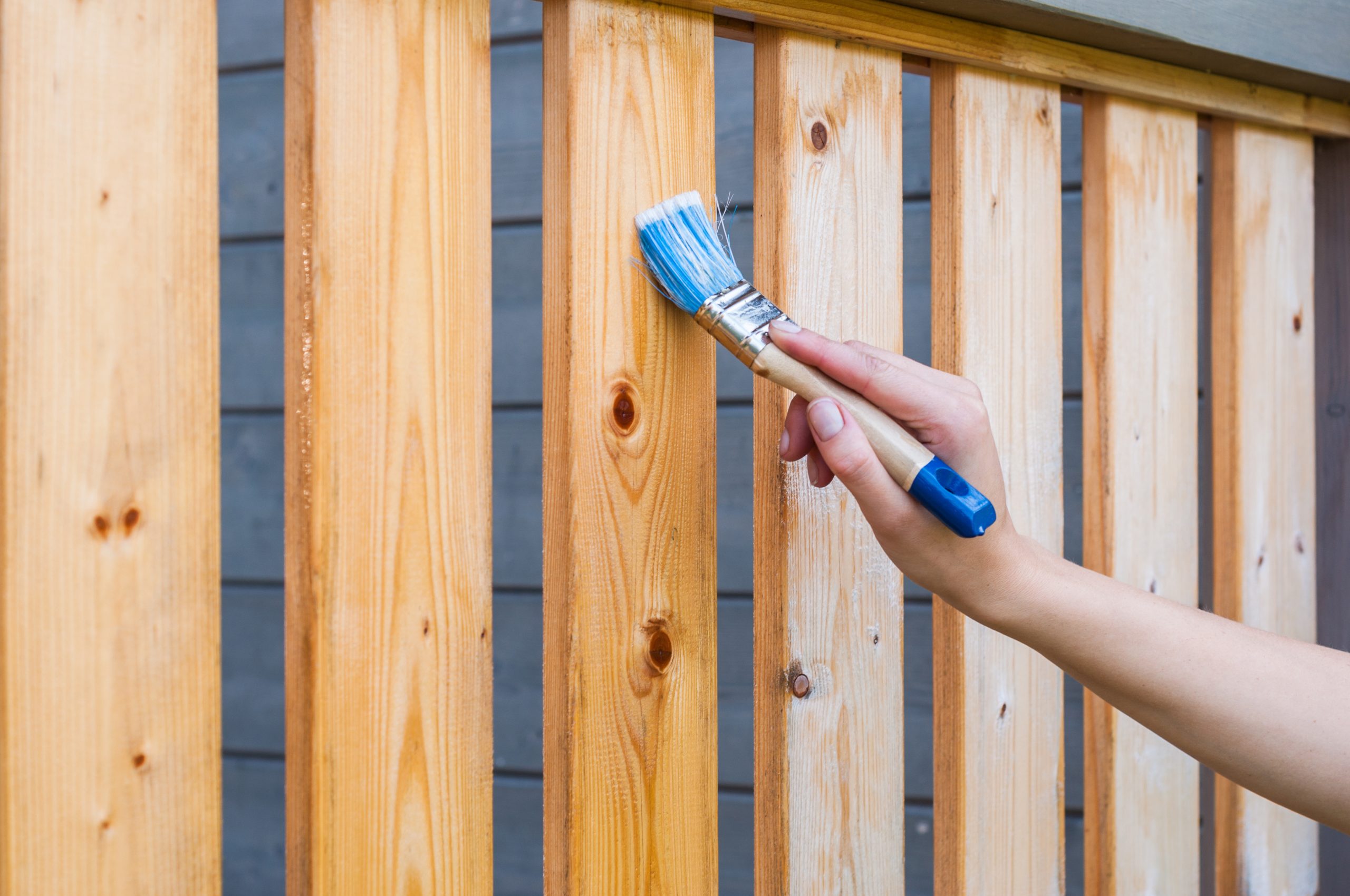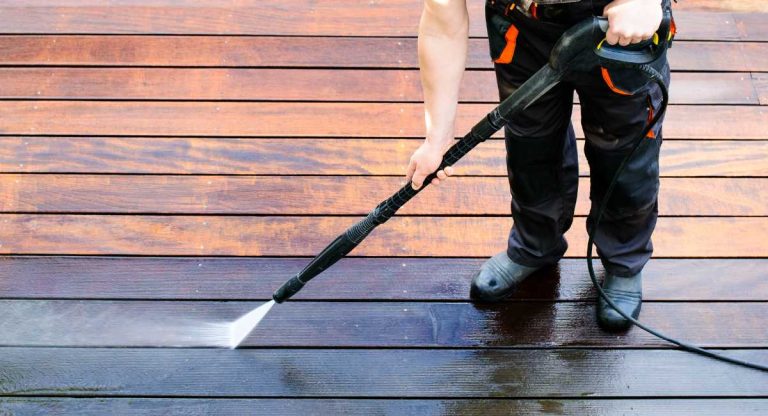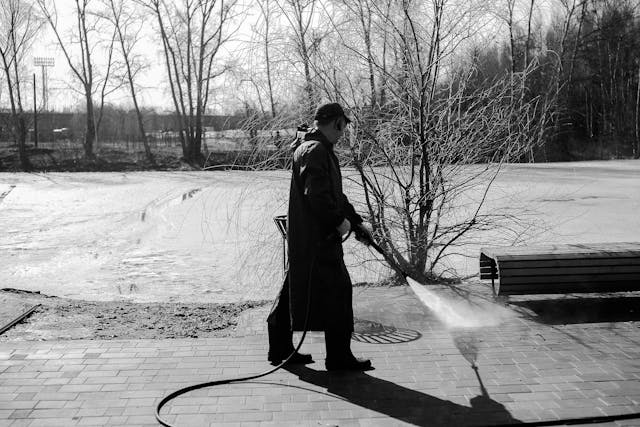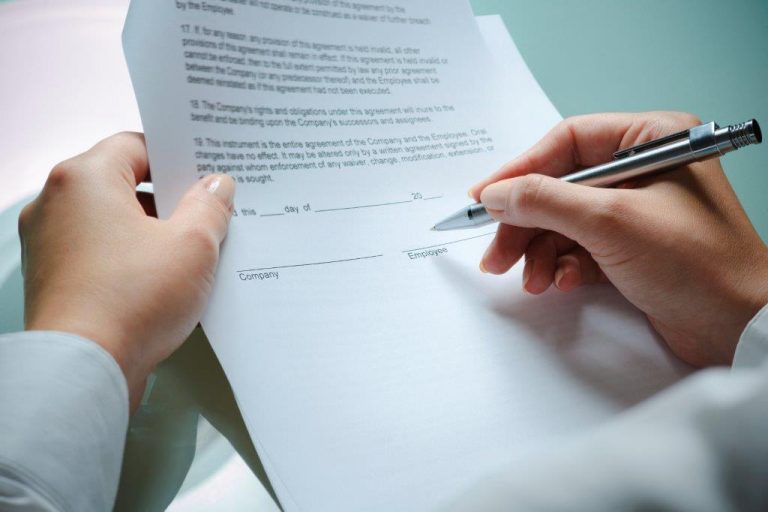
When you think about hiring a power washing company, your first thought is probably about blasting away dirt, mold, and grime. 🧼💨 But what happens after the surface is clean? Can that same company also seal or treat the surface to protect it?
The answer is often yes — many reputable power washing companies offer surface sealing or treatment as an add-on or bundled service. Whether you’re dealing with a concrete driveway, a wooden deck, or a brick patio, sealing can help preserve the results of your cleaning and protect your surfaces for the long haul. 💪🏡
In this article, we’ll dive into what sealing and treating surfaces involves, which surfaces benefit most, why it matters, and how to choose a company that offers it all. 🧽✅
🧱 What Is Surface Sealing or Treatment?
Sealing or treating a surface means applying a protective coating after power washing. This coating helps protect the material from:
- Moisture 💧
- UV damage 🌞
- Mold and mildew 🦠
- Oil and chemical stains 🛢️
- Everyday wear and tear 🦶
Depending on the surface and environment, the type of sealant or treatment will vary — and so will the application method.
🧼 Why It Makes Sense to Seal After Power Washing
Here’s why sealing after a power wash is a smart move:
- Surfaces Are at Their Cleanest: After power washing, there’s no dirt or contaminants to trap under the sealant. It’s the ideal time to apply a protective barrier.
- Prolongs Clean Results: Sealing can keep your freshly washed surfaces looking new for much longer.
- Prevents Damage: Clean surfaces are exposed and vulnerable — sealing adds a layer of protection.
- Saves You Money: Sealing can delay the need for costly repairs or replacements by preventing deterioration.
Think of it like waxing your car after a wash — it’s the finishing touch that locks everything in. 🚗✨
🔍 Which Surfaces Should Be Sealed or Treated?
Let’s go through the most common surfaces that benefit from post-wash sealing:
1. Concrete Driveways and Walkways
Concrete is porous, which means it can absorb water, oil, and chemicals. Without sealing, stains can set in and freeze-thaw cycles can cause cracking. ❄️☀️
Benefits of sealing:
- Prevents discoloration
- Reduces cracking and pitting
- Makes cleaning easier
- Enhances curb appeal
2. Wood Decks and Fences
Wood is beautiful but delicate. After power washing, it’s stripped of its natural oils and more prone to damage.
Sealing helps by:
- Locking out moisture
- Preventing UV fading
- Avoiding mildew and wood rot
- Extending the lifespan of your deck or fence
🌳 Look for transparent, semi-transparent, or tinted wood sealers depending on the look you want.
3. Pavers and Brick Patios
Pavers and bricks are often used in high-traffic areas and can shift, stain, or erode over time.
Sealing helps:
- Lock in joint sand to prevent movement
- Block weed growth and insect infestations
- Make colors pop for a rich, clean finish 🎨
- Protect from weathering and erosion
4. Roof Shingles (Soft Wash + Treatment)
While you don’t seal a roof the same way you would concrete, many companies apply treatments after soft washing to prevent future algae, mold, or lichen growth. 🌿
These are often biocide treatments that inhibit regrowth for 1–3 years.
Browse Amazon Here For Top Rated Power Washers And Accessories
🤝 Can the Same Company Do Both?
Absolutely — and many homeowners prefer this! Choosing a power washing company that also offers sealing ensures:
- Seamless scheduling: You don’t have to coordinate two separate contractors.
- Expert knowledge: They already understand the surface condition after cleaning.
- One-stop service: Save time, simplify communication, and possibly get a bundled discount. 💸
Before hiring, ask if they offer sealing, what products they use, and whether they recommend it for your surfaces.
🧪 What Types of Sealers Are Commonly Used?
Here are the main types of sealers you might encounter:
- Acrylic sealers: Great for concrete and pavers; available in matte or glossy finishes.
- Penetrating sealers: Soak into the surface for a natural look and better moisture protection.
- Film-forming sealers: Create a visible barrier; popular for decorative concrete.
- Oil-based or water-based wood sealants: Protect decks and fences; differ in drying time and finish.
Each has pros and cons. A reputable company will recommend the best one based on your needs. ✔️
📆 When Should You Seal After Power Washing?
Timing matters. In most cases, surfaces need to dry completely before sealing.
- Concrete: 24–48 hours
- Wood: 48–72 hours (sometimes longer)
- Pavers: 24–48 hours depending on weather
- Roof treatments: Applied immediately after soft washing
Weather also plays a role — no rain for at least 24 hours after application is ideal. 🌦️
💬 Questions to Ask Before Sealing
Before you move forward, ask your power washing company:
- “Do you offer sealing or surface treatment after cleaning?”
- “What sealers do you use and why?”
- “How long does the sealant last?”
- “Will you provide care instructions after sealing?”
- “Are there any maintenance recommendations?”
A good company will walk you through all of this and tailor the approach to your property. 🏠
💡 Final Thoughts
Cleaning your surfaces is just the first step — protecting them is the next. Sealing or treating after power washing ensures your investment lasts longer, looks better, and stands up to the elements. 🌧️🌞
Hiring a power washing company that also seals surfaces simplifies your life and guarantees a professional, long-lasting finish. Whether it’s a glistening driveway or a renewed wooden deck, adding that extra layer of protection makes all the difference.
Browse Amazon Here For Top Rated Power Washers And Accessories






